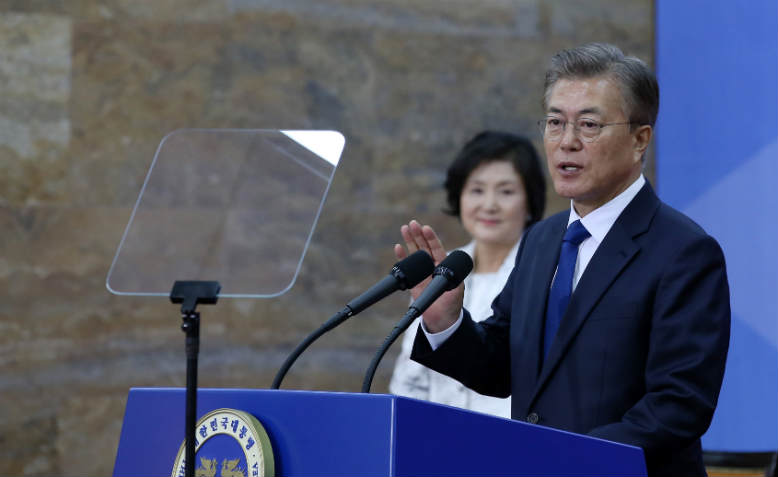 South Korea's president Moon Jae-in. Photo: Wikimedia Commons
South Korea's president Moon Jae-in. Photo: Wikimedia Commons
The US approach to North Korea cannot be understood without considering its wider goals in the region
There were large protests in Seoul this week in response to the deployment and expansion of the US THAAD missile defence system in South Korea. The US, and its allies in Seoul, say this is a necessary response to the growing threat from the North.
Initially objecting to the deployment of THAAD, South Korea’s President Moon Jae-in has now given the green light – although apparently ‘tentatively’, which is an indicator of the tightrope he is walking between domestic opposition and external pressure from the United States. The opposition also comes from China, which says deployment of the missile defence system threatens to destabilise the whole region.
President Moon Jae-in came to power arguing that South Korea should be prepared to say no to US demands and as an advocate of the peaceful reunification of Korea, which explains the sense of betrayal that a growing number of South Koreans now feel.
A South Korean student was interviewed on Newsnight on Friday about the possibility of war. Believing it possible, he argued that “crazy” President Trump “is more of a dangerous person than Kim Jong Un in the stakes of war,” a view presumably held by many in South Korea and around the world.
Many analysts now say that it is the unpredictability of Trump that is the most dangerous aspect of the present nuclear crisis. Kim Jong Un is said to be banking on the US recognising that the stakes are too high for war – a war would kill millions – particularly now that North Korea’s nuclear capacity has been demonstrated. But can we be sure this is appreciated by Trump?
Trump’s frightening war of words with Kim Jong Un, his calls to unleash ‘fire and fury’ on North Korea, the US-South Korean military drills, and the deployment of missile defence systems threaten to tip the balance in favour of actual war. This is the massive danger the protesters in South Korea seem to realise that our own leaders seem blissfully unaware of.
The background to the present intensification of the US – North Korean nuclear crisis, however, didn’t begin with Trump. Under President Obama there was a massive increase in nuclear weapons spending at home and a build up of US military bases near China. When we consider this alongside the disastrous US-led War on Terror, it’s not difficult to see why Pyongyang and Beijing feel threatened by the expansion of US military power in the region.
In 2016, Obama refused a deal that could have led to freezing North Korea’s nuclear weapons programme in return for an end to US military drills over the Korean peninsula. President Obama said he didn’t think it was a sincere offer, telling Pyongyang it will “have to do better than that”. But when you consider that North Korea spends almost 25% of its GDP on military spending, it’s easy to see, if only as a matter of self-interest, why Pyongyang would want to secure security through far less costly and dangerous means. Self-interest was a part of what underpinned the successful Iran nuclear deal.
America’s history of refusing to seriously consider peace deals reflects the truth that it is power rather than peace that is the primary US goal in Asia. The present prohibition by Trump to enter talks with the North without unreasonable preconditions shouldn’t, therefore, come as much surprise.
Obama’s Pivot to Asia was a response to the massive economic growth in China, China’s own increase in military spending, and the perceived threat it now poses to US hegemony. The history of the ratcheting up of US military power in Asia is brilliantly told in John Pilger’s documentary The Coming War With China. The US approach to North Korea cannot be understood without considering its wider goals in the region. Trump is simply carrying the baton that Obama passed him, but with a carelessness and stupidity that threatens the security of the whole world.

